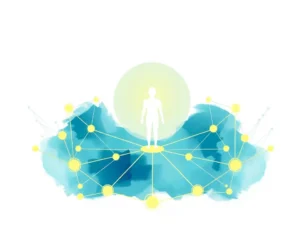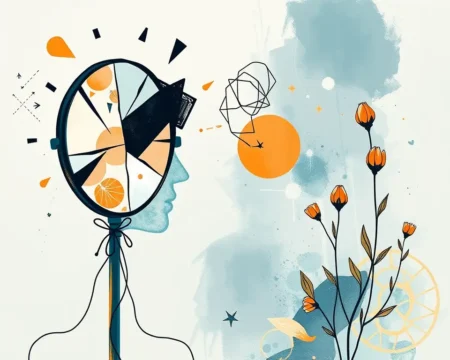In our modern world, the pursuit of self-improvement is often relentless. We are bombarded with messages encouraging us to be better, faster, and more productive. However, this constant drive can lead to burnout, a state of emotional, physical, and mental exhaustion. Looking back through history, we can find valuable lessons about how to pursue growth in a sustainable way, avoiding the pitfalls of modern-day burnout.
The Historical Roots of Self-Improvement
The concept of self-improvement is not new. Throughout history, people have sought ways to enhance their lives, whether through religious practices, philosophical inquiry, or practical skill development.
Ancient Wisdom
- Ancient Greece: Philosophers like Socrates, Plato, and Aristotle emphasized self-examination and the pursuit of virtue. The concept of eudaimonia, often translated as flourishing, encouraged a balanced approach to life, which included intellectual, ethical, and physical development. Practices such as Katharsis, or emotional release through art and expression, were also highly valued. The maxim “Know Thyself,” inscribed at the Temple of Apollo at Delphi, highlights the importance of introspection and understanding one’s own strengths and weaknesses.
- Ancient India: The practice of yoga, originating in ancient India, was not just a physical exercise, but a holistic approach to uniting the body, mind, and spirit. Similarly, texts like the Upanishads and the Bhagavad Gita guided individuals toward aligning with their dharma, or moral duty, emphasizing harmony within oneself and the universe.
- Ancient China: Confucius stressed self-cultivation and harmonious relationships, encouraging personal excellence alongside social responsibility. The focus was on continuous growth, not speed.
Religious and Spiritual Practices
- Early Religious Guidance: Many early forms of self-help were rooted in religious principles, emphasizing character development and values such as duty and honor. The Bible, for example, can be seen as an early form of self-help, offering guidance on how to live a virtuous life.
- Medieval Monasticism: During the Middle Ages, monks exemplified self-betterment through rigorous self-discipline and spiritual practices.
The Dawn of Self-Help Literature
- 19th Century: Figures like Samuel Smiles, a Scottish author, popularized the idea of “self-help” through his writings. His book, Self-Help, published in 1859, emphasized the importance of personal responsibility and character development.
- Early 20th Century: Authors such as Napoleon Hill and Dale Carnegie further shaped the self-help movement with their popular books like Think and Grow Rich and How to Win Friends and Influence People. These books focused on techniques for achieving success and building relationships.
- The New Thought Movement: Emerging in the late 19th century, this movement promoted the idea that positive thinking could lead to success and well-being.
The Rise of Burnout
While the pursuit of self-improvement has a long history, the concept of burnout is relatively recent.
The Origins of the Term
- 1970s: The term “burnout” first appeared in the academic literature in the 1970s. Psychologist Herbert Freudenberger is credited with coining the term in a clinical sense in 1974, initially referring to the emotional exhaustion experienced by professionals in caregiving roles.
- Early Observations: Even before Freudenberger’s formal definition, US air traffic controllers in 1971 were using the term “vocational ‘burn out’” to describe their exhaustion due to stressful working conditions.
- Expansion of the Concept: The concept of burnout quickly spread beyond healthcare to other professions. By the mid-1990s it was being recognized as a global phenomenon in places like Asia, the Middle East, and Latin America, often reflecting the socioeconomic advancement of different nations.
Modern Understanding of Burnout
- Multidimensional Phenomenon: Modern burnout is seen as a multidimensional issue, characterized by exhaustion, cynicism, and self-doubt.
- Workplace Factors: While not exclusively a workplace issue, the pressures of the modern workplace are a major contributor to burnout. Long hours, lack of control, and high demands are all factors that increase the risk of burnout.
- Digital Overload: The blurring lines between work and home life, exacerbated by digital technology, have also contributed to higher rates of burnout.
- “Betterment Burnout”: The contemporary pressure to constantly improve oneself, fueled by social media and cultural expectations, can also lead to what is sometimes referred to as “betterment burnout”.
Lessons from the Past for Sustainable Self-Improvement
The historical trajectory of self-improvement, coupled with an understanding of burnout’s origins, can offer invaluable guidance for a more sustainable approach to personal growth.
Focus on Inner Well-Being
- Self-Awareness: As ancient Greek philosophy emphasized, understanding oneself is crucial. Regular self-reflection through journaling, meditation, or mindfulness can help identify your strengths, weaknesses, and core values. Pay attention to what causes you stress and overwhelm, and be willing to meet your needs.
- Emotional Release: Incorporate practices of Katharsis into your routine, engaging in creative activities or expressive outlets to process emotions and prevent negative feelings from accumulating.
- Mindfulness: Ancient Buddhist philosophy highlights the value of being present in the moment and letting go of judgements. Practices that encourage mindfulness, like meditation, can reduce anxiety and stress.
- Self-Compassion: Treat yourself with the same kindness and understanding you would offer to a friend. This involves recognizing when you are struggling and responding with care instead of self-criticism.
Embrace Balance and Moderation
- Realistic Goals: Set achievable goals for your self-improvement journey. Avoid the trap of trying to change everything at once. Start small and gradually increase your efforts, remembering the ancient wisdom that slow and steady progress is more sustainable than intense, short-lived bursts of effort.
- Work-Life Balance: Avoid the trap of letting your pursuit of self-improvement take over your life. Prioritize time for rest, recreation, and social connection. Set boundaries between work and personal time.
- Say No: Don’t over commit yourself. It’s okay to say no to opportunities and requests that will lead to overwhelm.
- Regular Breaks: Take frequent breaks throughout the day to recharge your mind and body.
- Focus on What You Can Control: Stoic philosophy teaches us to focus on what is within our control and accept what is not. This reduces anxiety and promotes a sense of inner peace.
Prioritize Purpose and Meaning
- Values-Driven Growth: Align your self-improvement efforts with your values and long-term goals. Don’t just pursue self-improvement for the sake of it.
- Meaningful Work: Focus on activities that are personally fulfilling and contribute to your sense of purpose.
Nurture Your Physical Health
- Nutrition: Fuel your body with nutritious food that supports your energy levels and focus. Replace sugary snacks with wholesome choices.
- Exercise: Engage in regular physical activity that you enjoy.
Build a Supportive Community
- Positive Relationships: Surround yourself with people who are positive, encouraging, and supportive.
- Mentorship: Seek out mentors who can offer guidance and support on your journey.
Recognize the Signs of Burnout
- Early Detection: Be aware of the signs of burnout, including exhaustion, irritability, and loss of interest in activities you once enjoyed.
- Adjust as Needed: Be prepared to modify your plans as necessary. If you are feeling overwhelmed, slow down and reevaluate your goals.
- Seek Help: Don’t hesitate to seek help from a therapist or counselor if you are experiencing burnout.
Conclusion
The path to self-improvement is a lifelong journey, not a race. By learning from the past, embracing balance, and focusing on inner well-being, we can create a more sustainable approach to personal growth, avoiding the pitfalls of burnout and fostering a more fulfilling life.










